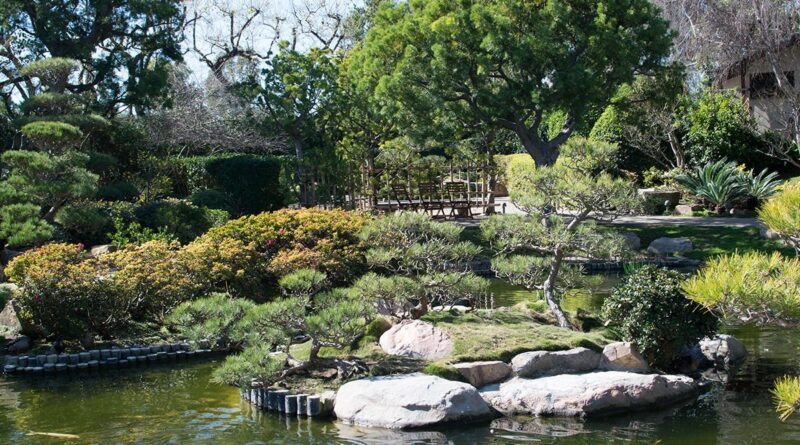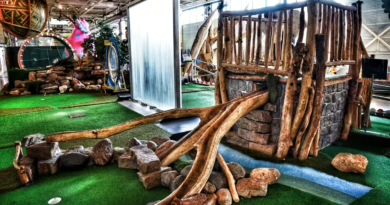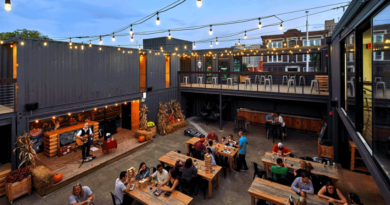Earl Burns Miller Japanese Garden in Long Beach California
Nestled within the bustling city of Long Beach, California, lies a hidden gem of peace and serenity—the Earl Burns Miller Japanese Garden. Located on the campus of California State University, Long Beach (CSULB), this exquisite garden is a testament to the beauty of Japanese landscape design and serves as a tranquil retreat for students, faculty, and visitors alike. With its meticulously maintained grounds, traditional architecture, and cultural significance, the Earl Burns Miller Japanese Garden offers a unique and enriching experience for those seeking a moment of calm in the heart of the city.
A Brief History of the Earl Burns Miller Japanese Garden
The Earl Burns Miller Japanese Garden was established in 1981, thanks to the generosity of Loraine Miller Collins, who funded the garden in memory of her late husband, Earl Burns Miller. The garden was designed by Edward Lovell, a landscape architect who was inspired by the famous Imperial Gardens in Tokyo, Japan. Lovell worked closely with Mrs. Collins to create a space that would reflect the traditional elements of a Japanese garden while also serving as a cultural and educational resource for the university and the wider community.
The garden was intended to be more than just a place of beauty; it was conceived as a living classroom where visitors could learn about Japanese culture, horticulture, and the principles of garden design. Since its opening, the garden has fulfilled this mission by hosting a variety of cultural events, educational programs, and community activities.
Design and Features of the Garden
The Earl Burns Miller Japanese Garden is a prime example of traditional Japanese garden design, which emphasizes harmony with nature, balance, and tranquility. The garden spans 1.3 acres and is designed to evoke a sense of peace and contemplation. Key elements of the garden include a koi pond, stone lanterns, a tea house, and carefully curated plantings that reflect the changing seasons.
1. The Koi Pond
At the heart of the garden lies a large koi pond, which is one of the most striking features of the Earl Burns Miller Japanese Garden. The pond is home to a vibrant population of koi fish, which are considered symbols of good fortune and perseverance in Japanese culture. Visitors can purchase koi food from the garden’s gift shop and feed the fish, an activity that is particularly popular with children. The pond is also adorned with water lilies and surrounded by stepping stones and stone bridges, inviting visitors to engage with the water and enjoy the serene atmosphere.
2. Stone Lanterns and Bridges
Scattered throughout the garden are traditional Japanese stone lanterns, known as “tōrō.” These lanterns are often found in Japanese gardens and temples, where they serve both a functional and aesthetic purpose. The lanterns in the Earl Burns Miller Japanese Garden are carefully positioned to enhance the garden’s natural beauty and to provide soft illumination in the evening.
Bridges are another essential feature of Japanese garden design, symbolizing the transition from the physical world to the spiritual realm. The garden’s bridges are designed to blend seamlessly with the natural landscape, offering visitors a peaceful path to explore the garden’s various sections.
3. The Tea House
The garden also features a traditional Japanese tea house, which is a focal point for cultural activities and events. The tea house is designed in the sukiya-zukuri style, characterized by its simplicity, natural materials, and attention to detail. It serves as a venue for tea ceremonies, lectures, and workshops on Japanese culture and arts. The tea house is surrounded by a small garden with stone paths and bamboo fences, creating an intimate and contemplative space.
4. Seasonal Plantings
One of the hallmarks of the Earl Burns Miller Japanese Garden is its seasonal plantings, which ensure that the garden remains beautiful and vibrant throughout the year. The garden features a variety of trees, shrubs, and flowers that are native to Japan, including Japanese maples, cherry blossoms, azaleas, and camellias. In the spring, the garden comes alive with the delicate pink and white blossoms of the cherry trees, while in the fall, the leaves of the maples turn brilliant shades of red and orange.
The garden’s plantings are carefully chosen and arranged to create a sense of balance and harmony. The use of evergreens, such as pine and bamboo, ensures that the garden maintains its structure and beauty even in the winter months.
Cultural and Educational Programs
The Earl Burns Miller Japanese Garden is not only a place of beauty but also a center for cultural and educational activities. The garden’s mission is to promote understanding and appreciation of Japanese culture, horticulture, and garden design. To this end, the garden offers a wide range of programs and events that cater to all ages and interests.
1. Tea Ceremonies
One of the most popular cultural activities at the garden is the Japanese tea ceremony, known as “chanoyu.” The tea ceremony is a traditional Japanese ritual that involves the preparation and consumption of matcha, a powdered green tea. The ceremony is characterized by its meticulous attention to detail and its emphasis on harmony, respect, purity, and tranquility. Visitors to the garden can participate in tea ceremonies, which are held in the tea house and conducted by experienced tea masters. eSIM Japan.
2. Educational Workshops
The garden offers a variety of workshops and classes that focus on different aspects of Japanese culture and horticulture. These include bonsai workshops, where participants can learn the art of growing and shaping miniature trees, as well as ikebana classes, which teach the principles of Japanese flower arranging. The garden also hosts lectures and demonstrations on topics such as garden design, Zen philosophy, and traditional Japanese arts.
3. School Programs and Tours
The garden is a popular destination for school groups, and it offers a range of educational programs tailored to students of all ages. These programs include guided tours, hands-on activities, and interactive lessons that align with the California State Standards for Education. The garden’s educational programs are designed to foster an appreciation for nature, culture, and the environment.
4. Cultural Festivals and Events
Throughout the year, the garden hosts a variety of cultural festivals and events that celebrate Japanese traditions and seasonal changes. These include the annual Cherry Blossom Festival, which marks the arrival of spring and the blooming of the cherry trees, as well as the Autumn Moon Festival, which celebrates the harvest season. The garden also hosts performances of traditional Japanese music and dance, as well as craft demonstrations and cultural exhibits.
A Sanctuary for Reflection and Connection
The Earl Burns Miller Japanese Garden is more than just a beautiful landscape; it is a sanctuary for reflection, relaxation, and connection. The garden’s tranquil atmosphere and thoughtful design encourage visitors to slow down, appreciate the beauty of nature, and find inner peace. Whether you’re attending a cultural event, participating in a workshop, or simply taking a quiet stroll through the garden, the Earl Burns Miller Japanese Garden offers a space for mindfulness and contemplation.
For many visitors, the garden is also a place to connect with others. The garden hosts weddings, receptions, and other special events, providing a serene and picturesque setting for gatherings and celebrations. The garden’s intimate spaces and carefully curated landscapes make it an ideal location for photography, meditation, and moments of quiet reflection.
Visiting the Earl Burns Miller Japanese Garden
The Earl Burns Miller Japanese Garden is open to the public and welcomes visitors of all ages. The garden is located on the campus of California State University, Long Beach, and is easily accessible from major highways and public transportation. Admission to the garden is free for CSULB students, faculty, and staff, while a nominal fee is charged for general visitors.
The garden offers guided tours for groups, as well as self-guided tours for individual visitors. The garden’s gift shop sells a variety of Japanese-inspired items, including books, tea sets, and garden supplies. The garden is wheelchair accessible and provides accommodations for visitors with disabilities.
The best times to visit the garden are in the spring and fall when the seasonal plantings are at their most vibrant. However, the garden’s evergreen plantings and carefully designed landscapes ensure that it remains beautiful and inviting throughout the year.
Conclusion
The Earl Burns Miller Japanese Garden is a true oasis in the heart of Long Beach, offering visitors a peaceful retreat from the hustle and bustle of city life. With its stunning landscapes, cultural programs, and educational offerings, the garden provides a unique opportunity to explore the beauty of Japanese garden design and connect with nature. Whether you’re a local resident, a student at CSULB, or a visitor to the area, the Earl Burns Miller Japanese Garden is a must-see destination that promises to inspire and delight.
Discover more from City Towner
Subscribe to get the latest posts sent to your email.




